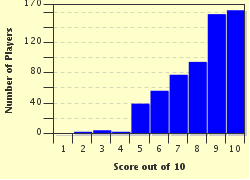Quiz Answer Key and Fun Facts
1. The Gulf of Fonseca borders Honduras to the south. What body of water borders the nation to the north?
2. In years past, Honduras was called British Honduras.
3. After the Spanish conquest in the 1500s, the Spanish called Honduras a province of the "Kingdom of Guatemala" but seemed to have somewhat of a problem deciding on the capital because they named three cities as the capital before finally settling on one. Which of these was once, but is no longer, the capital of Honduras?
4. British controlled Jamaica put a part of Honduras under its protection around 1740 because the indigenous people of the eastern portion of the country simply didn't want to be ruled by Spain, preferring to stay independent, and fought the Spanish in order to do so. What is the name of the region in which those people lived?
5. When did Honduras declare itself independent of Spain?
6. In La Mosquitia, along the Platano River, an area was named a World Heritage Site was in 1982. What is this site called?
7. The monetary unit of Honduras is named after a certain chief of an indigenous tribe. What currency does Honduras use?
8. The flag of Honduras has the same colors as do the flags of Greece and Finland. However, rather than having a cross, the Honduran flag has other symbols. Tell me what they are?
9. Where would you find bottlenose dolphins in Honduras?
10. Honduras contains one of the richest archaeological sites in the Americas in the ruins of the city of Copan. What ancient civilization built this beautiful and important site?
Source: Author
habitsowner
This quiz was reviewed by FunTrivia editor
Tizzabelle before going online.
Any errors found in FunTrivia content are routinely corrected through our feedback system.


